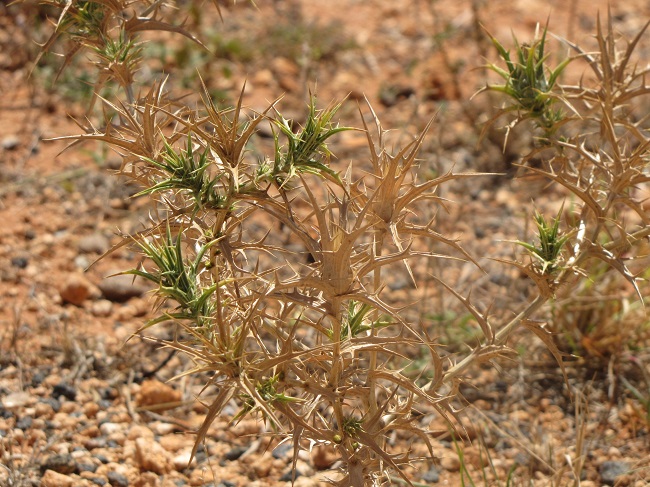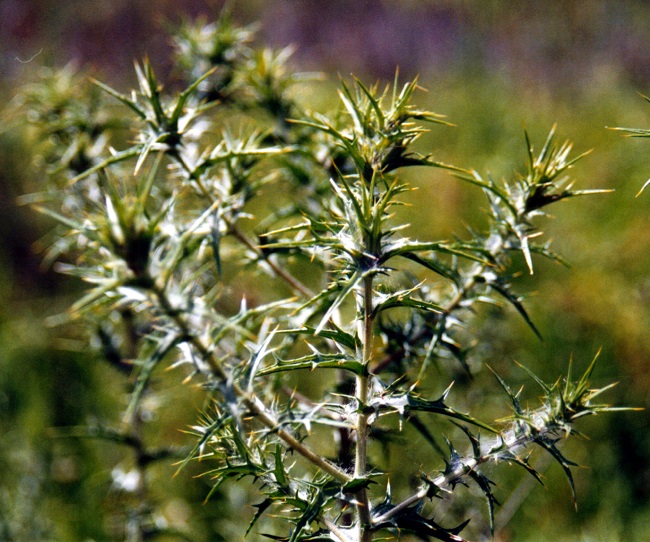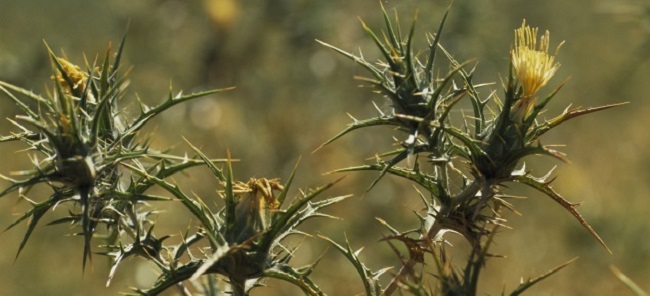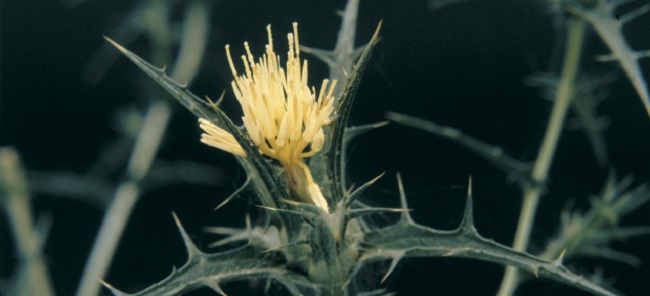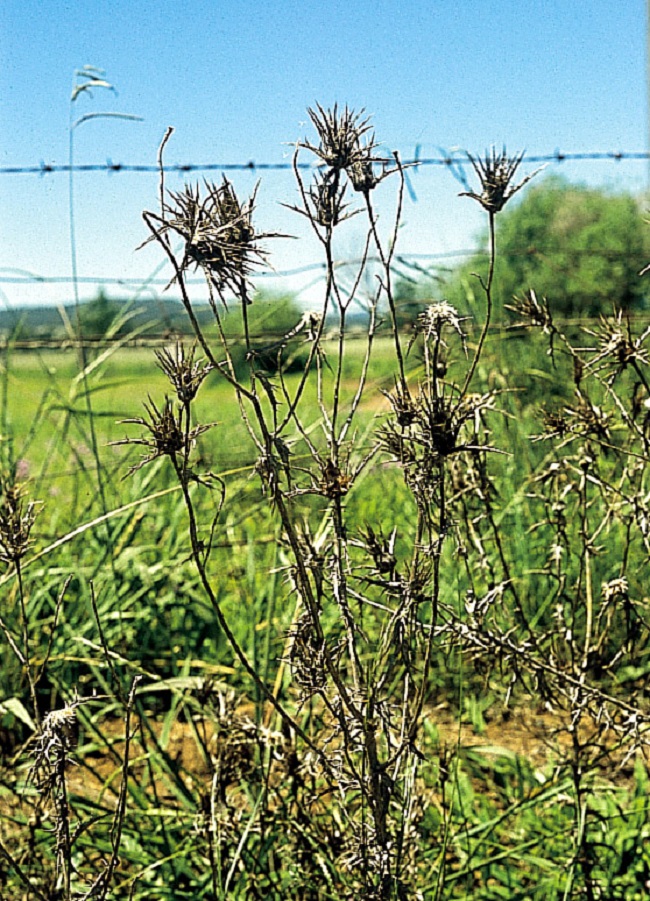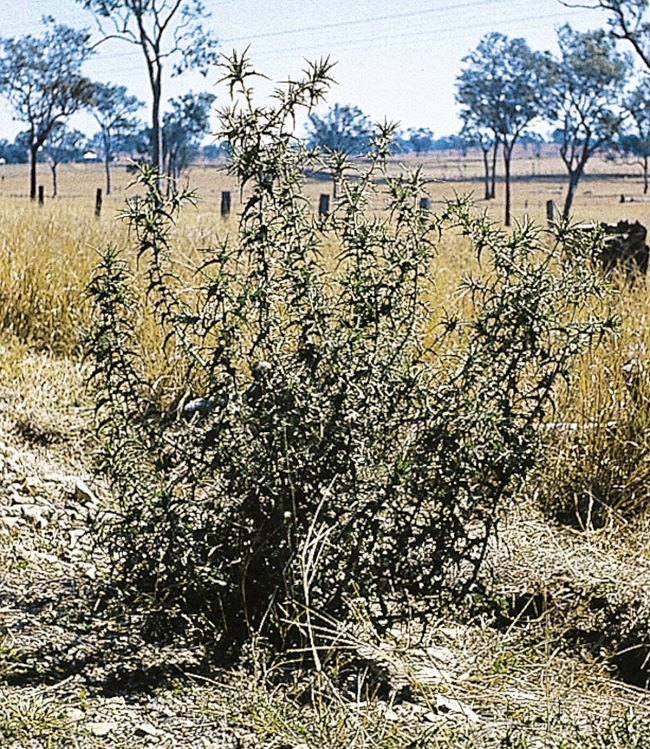Saffron thistle
Scientific name: Carthamus lanatus
Declaration status: Class B
Saffron thistle is a native of the Mediterranean region and western Asia that has spread to many temperate areas including Australia.
Saffron thistle occurs in all states of Australia. It is widespread in the wheat and semi-arid grazing areas of New South Wales, Victoria, South Australia, Western Australia and Queensland.
In the Northern Territory (NT), saffron thistle is found only in the southern region.
Impact
Saffron thistle can have all of the following impacts:
- it occurs in dense patches
- restricts livestock movements and can injure animals
- reduces biodiversity and ecological function
- reduces carrying capacity
- restricts mustering.
Identification
You should use this as a guide. There may be other plants or weeds that look similar.
- annul growing herb, standing erect up to 1m or higher
- leaves are grey green, up to 20cm long and deeply divided with stout spines
- stems are yellow-white or very pale green
- flowers being solitary, yellow and surrounded by spiny bracts
- seeds are grey-brown, egg-shaped, four sided and 15mm to 8mm long.
Control
A persistent control approach is required along with long-term monitoring and follow-up control programs must be done to stop re-establishment from seed banks that can stay dormant up to eight years but most of them germinate within two to three years.
Chemical control
The best time to treat saffron thistle is from March to October. Below is a list of treatment methods that can be used.
Chemical and concentration | Rate | Situation, method and notes |
|---|---|---|
2,4-D Amine 625g/L | 320ml / 100L | Seedling (individuals and infestation): |
Glyphosate 360g/L | 15ml / 1L | Seedling (individuals and infestation): |
Non-chemical control
Hand pulling and grubbing
Weeds, including their roots, are physically pulled out of the ground by hand or using hand tools. This is an effective method of control for individual weeds and recent outbreaks that haven't released seeds yet, but it requires a lot of labour.
Fire
Fire can use to kill mature plants and seeds on the ground.
Ploughing
Plough deeply that will bury the seeds and seedling rarely emerge from 5cm below in the soil. This leaves large areas of soil exposed so follow up control or revegetation must be considered.
Spread
Saffron thistle only reproduce by seeds. Seeds are spread by wind and by attaching to animals, clothing and vehicles but seeds are most commonly spread as contaminant in seed, grain, hay or chaff.
Spread prevention
You can prevent the spread of saffron thistle by doing all of the following:
- map infestations to help develop a management plan
- control minor infestations, isolated outbreaks or seedlings first
- isolate and monitor stock which are being moved from infested paddocks to clean paddocks
- designate wash down areas and actively work to prevent contamination of clean areas
- monitor areas that you have treated and watch for re-infestations.
Give feedback about this page.
Share this page:
URL copied!
